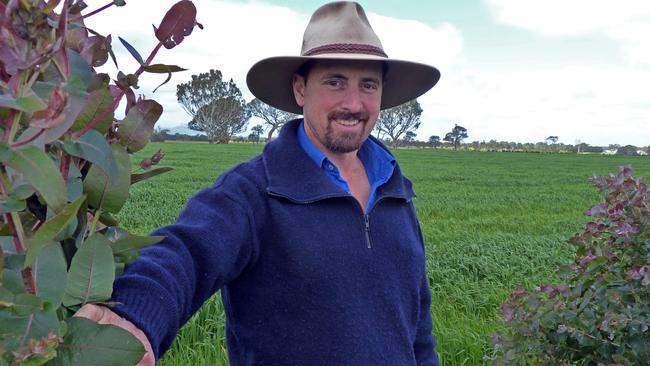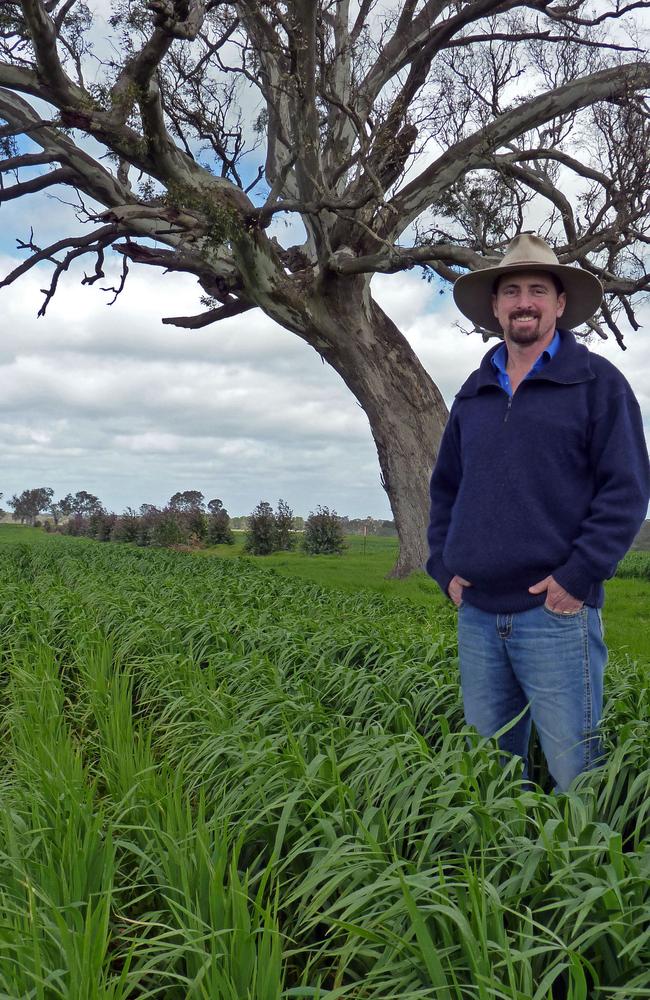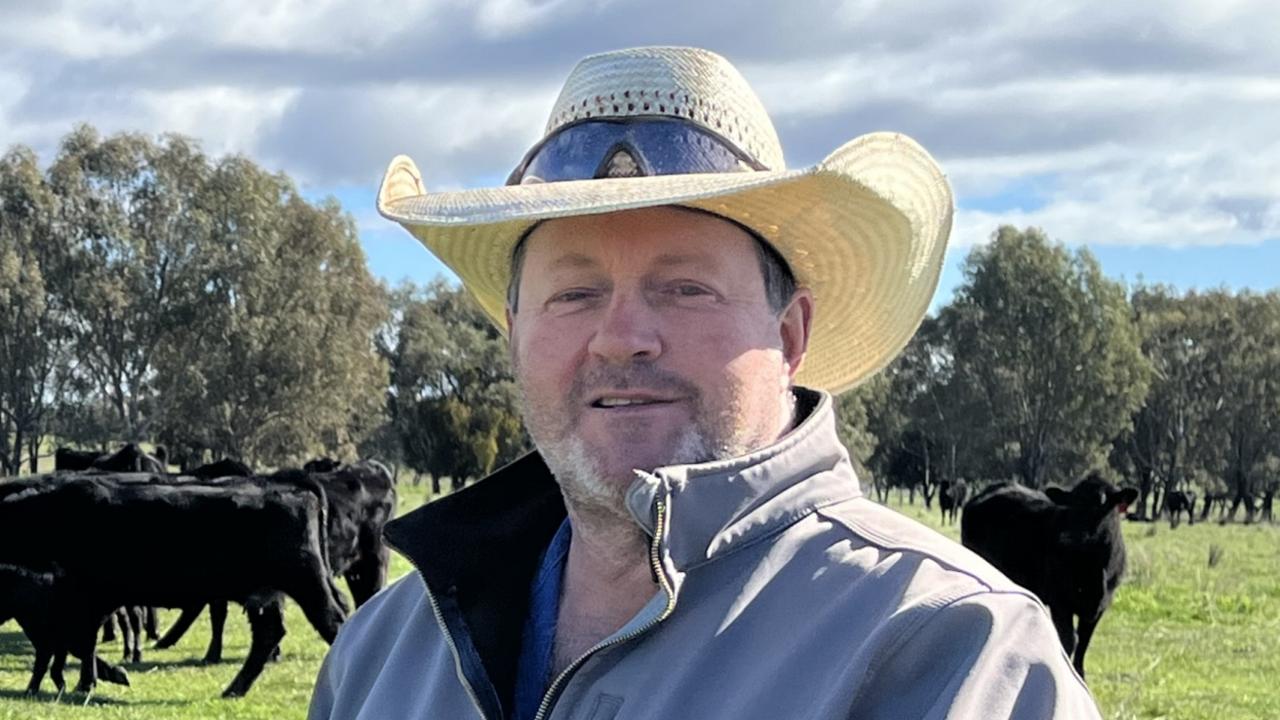Bluegums to farmland: Cavendish farmers Karl and Bryony Price
THESE innovative Western District farmers see the light through the trees, writes KATE DOWLER.

ABOUT 30,000ha of ex-bluegum land in Victoria’s Western District and South Australia’s South East is expected to be returned to farmland within a decade.
And farmers such as Karl and Bryony Price are at the forefront of working out how best to renovate the land.
The Cavendish farmers bought 290ha of unharvested bluegum trees in 2013. Three months after harvest last year, and after a lot of work, they were growing barley and oats on the property.
Their story is one of many playing out in the paddocks of the Green Triangle, which was home to about 150,000ha of bluegum plantings during the managed investment scheme-driven boom of the 2000s. Now, with the timber industry estimating 20 per cent, or 30,000ha, will not go into bluegums for a second rotation and be returned to farmland, those blocks are coming on to the market.
And farmers are using a range of methods to reclaim the land for pastures and cropping; from gradual transitions — lower cost and lower production — to faster, high cost but higher production techniques, such as those employed by the Price family.
Karl and Bryony farm 1500ha at Cavendish as part of a mixed sheep and crop operation in partnership with his parents, Donald and Cheryl Price, and one full-time employee.
Income comes from three enterprises; cropping, sheep and contract work; laying “aggie” drainage pipes and hay production.
The family crops 600ha and has 7000 Merino and Dohne sheep, running a self-replacing Merino flock, breeding their Merino rams, and mating maiden ewes to Dohnes for prime lamb production and a better lambing percentages. They produce 1200 Merino lambs annually and up to 3000 Dohne-White Suffok lambs.
Lambs are sold at trade weights, preferably by Christmas, but are grain-fed to heavier weights if grain prices are not prohibitive.

DRAIN UNBLOCKER
GROWING crops on the Price farm was not successful, due to waterlogging on the red clay soils until they introduced a unique form of underground “aggie” pipe drainage in the 1980s.
They are spaced in 20m rows across a paddock, on a 1 per cent gradient.
“The soil is like a sponge, when it fills up, the pipes just take away what the soil doesn’t need,” Karl said.
“They are used in England a lot, and there are dairies around Colac using them, too.”
Water is further managed in cropping paddocks by lucerne being under-sown in cereals.
Looking to expand their farm size, particularly for cropping, Karl and Bryony bought the adjoining 290ha in 2013. The block had 13-year bluegums on it which were harvested early last year.
Since, they have renovated the property in two stages. “In 2015 we sold the chips as standing trees to South West Fibre and they started chipping in January 2016,” he said.
While the couple are open about their renovation costs they have not revealed how much the paid for the property, and also signed a contract preventing them disclosing the chip price.
However, Karl says, in all, the purchase and renovation costs minus the chip value, the cost was “well worth the time and effort”, adding that if they did not have the tree income it would have made the land purchase and renovation a lot more expensive.
“We ended up paying to grind the stumps down to 15cm,” he said.
“I worked out if I ground the stumps I’d pay for grinding in two years; otherwise, if we were just going to graze the property with stumps still there it would take five years before the stumps rotted enough to disc them in.”
CROP TOPS
IN the first year after harvest and land renovation, the Prices grew a 2.5 tonnes/ha barley crop on sloping country and two tonnes/ha oats elsewhere.
“They finished chipping on one block and that allowed us to get going on that and sow the block down pretty late, in July,” Karl said.
“We chipped on-site so all the trash was in heaps so we could burn them, which was better than if they chipped off-site and you wouldn’t have been able to clean up the trash as easily.”
Karl said he applied 2.5 tonnes/ha of lime over the block and disced twice, then harrowed and sowed directly with tines.
Other fertilisers used included a blend of nitrogen, phosphorus, sulphur and zinc at a 80kg/ha rate at sowing and a further 80kg/ha two weeks later. Urea was spread at 90kg/ha, twice.
The grinding cost $680-$750/ha using two different machines, both grinding the stumps 15cm below the soil surface.
The original plan was for the first year to leave the stubble and burn it to pick up any leftover sticks. But, after a good concentration of balansa clover emerged — spread off the airseeder at sowing — they decided to leave it in pasture and allow it to fix nitrogen.
Most of the second part of the former bluegum property has since also been prepared and sown to crop this year.
“It looks so good now, you wouldn’t really know it was under trees just a couple of years ago,” Bryony said.
The couple left a few rows of bluegums to coppice, for shelterbelts.
ECONOMIC CENTS
KARL said the 2.5 tonnes/ha barley crop equated to $140 tonnes/ha. Prime lambs each gained 10kg of liveweight — or the equivalent of $500/ha — grazing the balansa, which had been broadcast at sowing. Merino lambs have also been grazing on balansa since.
He said soil was nitrogen-hungry, but the olsen Ps had almost doubled.
In total; the major costs were $80-$100/ha for stick picking, $680-$750/ha for grinding, $15/ha for running the trash bar, $100/ha for lime and spreading at 2.5 tonnes/ha, $90-$110/ha for two passes with disc ploughs, $7.50/ha for harrowing and $5/ha for hand picking, leading to a total renovation cost in that first area converted of about of about $900-$1100/ha.
This year’s work, where Karl used his own discs, cost less at $960/ha plus sowing and fertiliser costs of $465/ha.
This did not include water infrastructure or fencing.
The Prices received a grant from the Glenelg Hopkins Catchment Management Authority to fence and relegate gullies with 6500 trees.
Karl and Bryony while their approach would not suit everyone, they believe it was the best way to get their new land producing well. “But it probably depends on how quickly you want to renovate the land and if you want to crop or graze livestock,” Bryony said.


